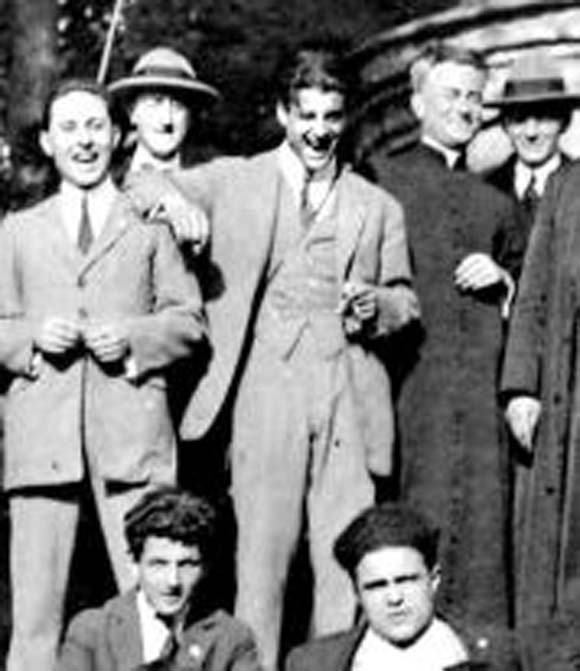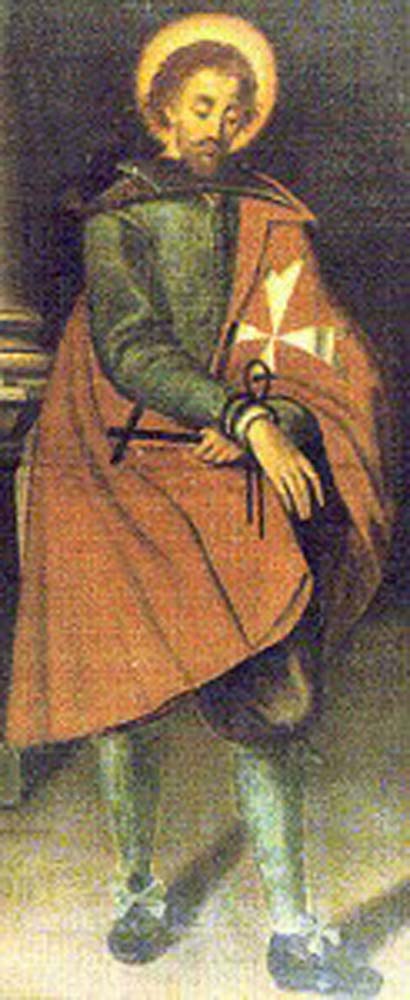
Saints this Month – Blesseds Pier Giorgio Frassati and Adrian Fortescue
1.48k
The Dominican family includes friars and nuns but also sisters, members of secular institutes, and fraternities of priests and laity (Fundamental Constitution §9). Our form of life is lived in many different ways, then. The first Rule for Dominican Laity was promulgated in 1285 and the most recent rule for the Lay Fraternities of St Dominic, promulgated in 1987, explains the life of the Dominican Laity in this way:
§8 They do their best to live in true community in the spirit of the beatitudes, and they give expression to this in regard to other members of the fraternity, particularly the poor and the sick, and as circumstances require, by doing works of mercy and sharing with them what resources they may have, and by offering prayers for the dead; so that all may be united in heart and soul in God (Acts 4:32).
§9 Together with the Brothers and Sisters of the Order the members of the fraternities take part in the apostolate; they are to share actively in the life of the Church, and be ever ready to work with other apostolic groups.
 This week we celebrate the feast days of two lay Dominicans. Blessed Pier Giorgio Frassati (July 4th, centre right in the photograph) was born in Turin in 1901 and died from polio in 1925. He was a young man of deep faith who at university gathered round him a group of friends who shared the same Catholic convictions. He was an enthusiastic member of the St Vincent de Paul Society and became a Lay Dominican in 1922. He combined a devout spiritual life with energetic involvement in Catholic Action. He worked in a club for young mountaineers and ‘preached’ not by talking about his faith but simply by the way he responded to what life brought his way. He wrote that charity alone was not enough, social action also was needed if the poor were to be properly cared for. He took the name ‘Girolamo’ when he became a Dominican after his hero Girolamo Savonarola. Pier Giorgio’s plans were to work as a lay missionary once he was a qualified engineer and then to get married. It was not God’s will for him, however, as he fell gravely ill with polio and died. His family were astonished at the thousands of people who lined the streets for his funeral, not realising how many people in the city had experienced his kindness. Devotion to him continued to grow as his friends gathered for a day of recollection each year on the anniversary of his death. Pope John Paul II beatified him in 1990 and his tomb is in the Cathedral of Turin, the Church that houses the Shroud.
This week we celebrate the feast days of two lay Dominicans. Blessed Pier Giorgio Frassati (July 4th, centre right in the photograph) was born in Turin in 1901 and died from polio in 1925. He was a young man of deep faith who at university gathered round him a group of friends who shared the same Catholic convictions. He was an enthusiastic member of the St Vincent de Paul Society and became a Lay Dominican in 1922. He combined a devout spiritual life with energetic involvement in Catholic Action. He worked in a club for young mountaineers and ‘preached’ not by talking about his faith but simply by the way he responded to what life brought his way. He wrote that charity alone was not enough, social action also was needed if the poor were to be properly cared for. He took the name ‘Girolamo’ when he became a Dominican after his hero Girolamo Savonarola. Pier Giorgio’s plans were to work as a lay missionary once he was a qualified engineer and then to get married. It was not God’s will for him, however, as he fell gravely ill with polio and died. His family were astonished at the thousands of people who lined the streets for his funeral, not realising how many people in the city had experienced his kindness. Devotion to him continued to grow as his friends gathered for a day of recollection each year on the anniversary of his death. Pope John Paul II beatified him in 1990 and his tomb is in the Cathedral of Turin, the Church that houses the Shroud. Blessed Adrian Fortescue (July 8th, left, in a painting from Malta) was born in Devon in 1476. He was a husband and father, justice of the peace for Oxfordshire, and a Lay Dominican. Like his great contemporary Saint Thomas More, Adrian led an ascetic life, daily seeking the guidance of the Holy Spirit, and seeking to do God’s will in all things. They also shared an interest in the hearty, coarse, and even bawdy, wit of the time and Adrian edited some collections of proverbs, witticisms and guidelines for good living. When Henry VIII broke with the Church Adrian remained faithful and was first arrested in 1534. He was released but re-arrested in 1539. He was sentenced to death without having been charged with any specific crime and was beheaded. There has been devotion to him since the 17th century, promoted by the Knights of St John of Jerusalem, an order of which he was also a member. He was beatified by Pope Leo XIII in 1895.
Blessed Adrian Fortescue (July 8th, left, in a painting from Malta) was born in Devon in 1476. He was a husband and father, justice of the peace for Oxfordshire, and a Lay Dominican. Like his great contemporary Saint Thomas More, Adrian led an ascetic life, daily seeking the guidance of the Holy Spirit, and seeking to do God’s will in all things. They also shared an interest in the hearty, coarse, and even bawdy, wit of the time and Adrian edited some collections of proverbs, witticisms and guidelines for good living. When Henry VIII broke with the Church Adrian remained faithful and was first arrested in 1534. He was released but re-arrested in 1539. He was sentenced to death without having been charged with any specific crime and was beheaded. There has been devotion to him since the 17th century, promoted by the Knights of St John of Jerusalem, an order of which he was also a member. He was beatified by Pope Leo XIII in 1895.There are chapters of Lay Dominicans in Cambridge, Edinburgh, Leicester, London, Manchester, New Forest, Newcastle Upon Tyne, Oxford, St Marychurch & Brixham, Walsingham, and Weymouth. New Lay Dominican groups are growing in Bristol, Cornwall and York, and there is an association of Dominican Laity in Glasgow.
If you wish to find out more about the vocation of the Lay Dominican click here.


